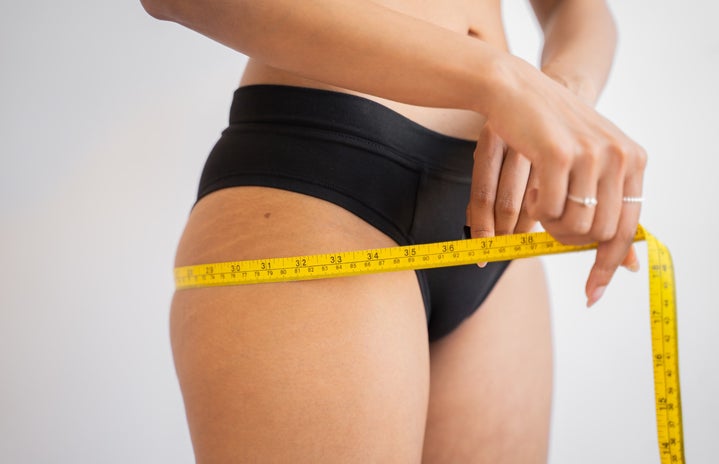As a member of the ahem.. big-boobed community, it’s a struggle to find your ACTUAL bra size. One store says one thing, one store says another thing… and then I’m left with an alphabet of bra sizes and no bras that actually fit.
It’s not only women’s clothes and bras. Adam Saber details his experience in an article for Esquire, describing how “Alfani’s 36-inch ‘Garrett’ pants were 38.5 inches, just like the Calvin Klein ‘Dylan’ pants.” That’s a little over two sizes down from the actual pant measurements! It seems like the wrong move to lie to customers, so why are so many stores changing sizes?
Why is this happening?
If you’re going to look at vanity sizing, you might be wondering how things are supposed to be. That’s a tricky question because, before the Great Depression, almost all clothing was made to fit a person’s measurements. Due to its labor intensity and high cost of dying fabric, importing and shipping, the fashion season’s trends happened particularly slowly (at least for non-wealthy people).
The standardization of women’s sizing didn’t happen until about the 1940s. This 1939 Time article, “No Boondogging” (the 1930’s lingo was wild), describes how the US Dept. of Agriculture made an effort to create a standard set of sizes. This Time article describes how almost 15,000 women’s measurements were recorded and analyzed to create a size chart. Of course, this was incredibly skewed. The sample size used was not exactly trustworthy because it was on a volunteer basis. The largest demographic for the study were white women from low-income communities who volunteered for the study’s reward money. Unfortunately, this extremely limited study not only relied on bust size but also did not represent nearly all other women who would come to rely on these standards.
In 1953 the National Bureau of Standards created a size list that would remain mandatory until the Department of Commerce withdrew its mandatory sizing in 1983. Suddenly, stores were coming out with their own lists, charts and references for customers to consult at their own stores.
Why?… Capitalism.
Well, it’s a lot more complicated than that, but it’s plain and simple– the American economy was booming, and with many women entering the workforce came the need for more women’s office wear. Store owners realized how people were more inclined to buy something if they perceived it as a smaller, more “flattering” size. Retailers had already been loosely skirting guidelines for years, so the withdrawal is what hit the nail on the head.
What Now?
To be frank, who knows? With the emergence of online shopping and the popularity of fast fashion retailers like Shein, what sizing standards will look like in 10 years is a huge question. My best advice? Learn what works for your own body by measuring your own waist, hips and bust. (Check out the Dummy’s Guide to Clothes Measurements here.) Before buying something online, look to see if their size chart has a measurement in inches that you can compare to. Be sure to check out “Review’s Top 6 Retailers Notorious For Vanity Sizing”! You might have some offenders lurking in your own closet!
Most importantly, don’t worry about your size! Our bodies are all built differently, and no standard size can work for everyone. Who cares what some old white guy in 1950 had to say about a woman’s waist?! As long as you love what you’re wearing, you’re rocking it! :)


